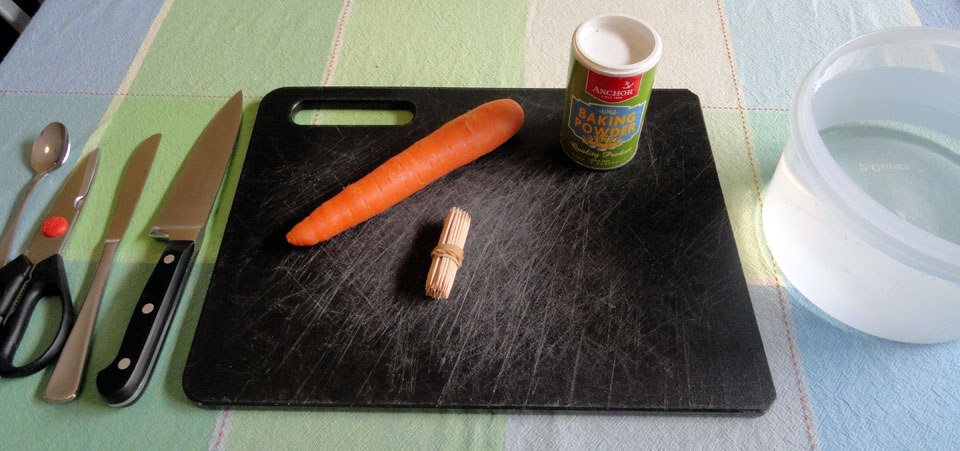
This month’s hands-on activity gets to the root of how submarines work!
What you’ll need:
- 1 carrot – fairly straight, not too tapered (If you don’t have a carrot; cut down a potato)
- Baking powder (not baking soda)
- Toothpicks
- Deep bowl or pot of water

Step 1:
Slice the carrot in half lengthwise, to create a long flat base, and trim the ends so it’s an evenish shape.

Step 2:
Make a hole in the middle of the base that is fairly deep but doesn’t go right through.
 Step 3:
Step 3:
Cut two toothpicks in half and stick two bits at each end of the top of the carrot (the side without the hole).

Step 4:
Pack the hole with baking powder – press it in firmly.

Step 5:
Set your submarine in the bottom of the water container and see what happens.

Step 6:
If your submarine is unstable, try re-positioning the toothpicks until it’s balanced.

What’s going on:
Carrots naturally sink in water. The toothpicks give your carrot some extra buoyancy, so it doesn’t sink so quickly.
When the baking powder gets wet, it reacts with the water to form bubbles of carbon dioxide gas. The bubbles build up under the submarine and push it to the surface.
When it reaches the top, the bubbles escape and the submarine sinks again. The cycle repeats with the submarine diving and surfacing until all the baking powder has reacted.
Real submarines fill their ballast tanks with air to surface, and vent the air to sink.
– Em Blamey, Creative Producer
See the inner workings of a real submarine - get behind the wheel and peer through the periscope of HMAS Onslow here at the museum!
